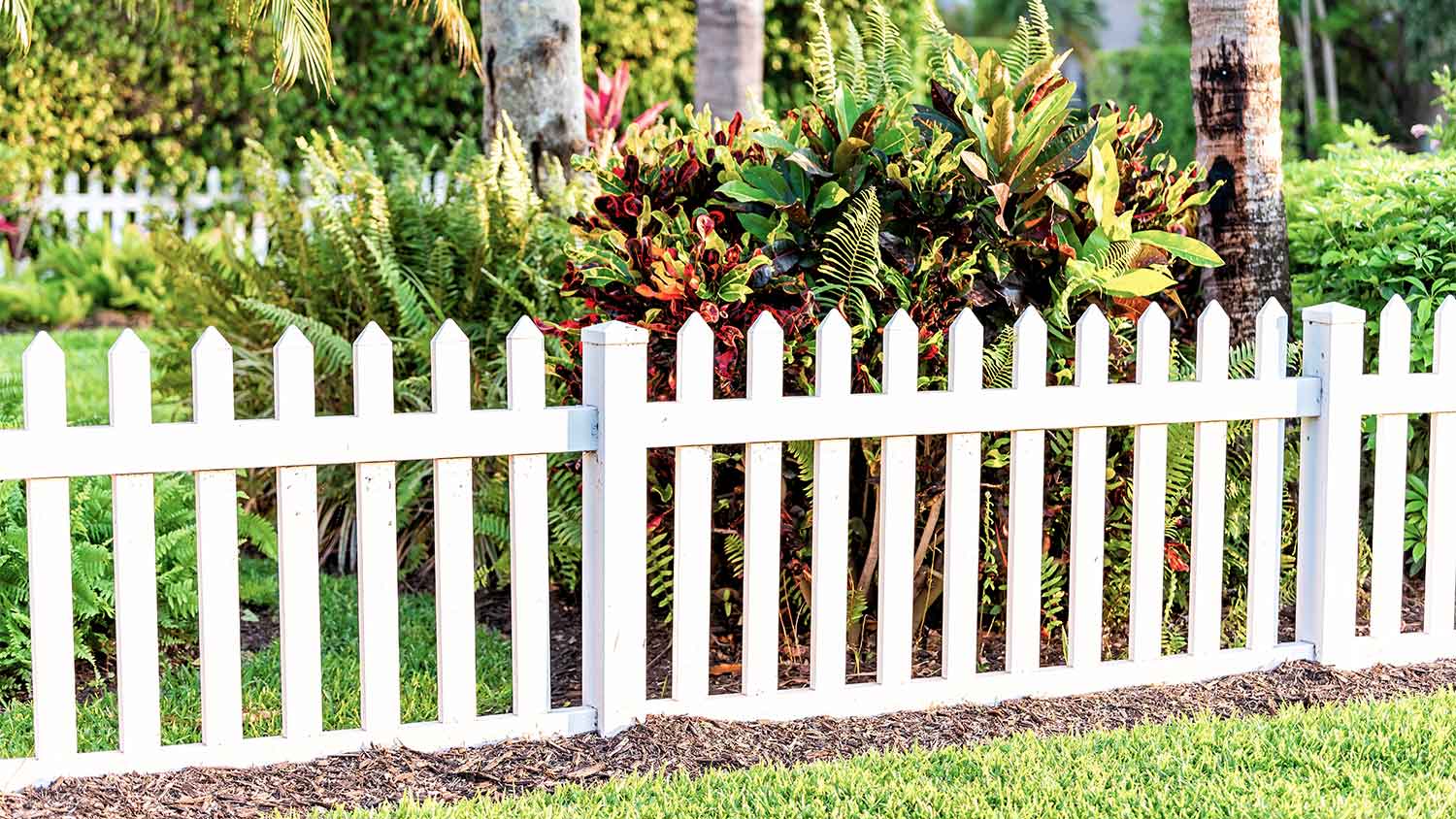
There are many dog fence options, from tall privacy fencing to wireless underground electric fences. Here's how much it costs to install a dog fence.
Prevent pups from poking around your petunias


Even if you're the world’s biggest animal lover, it’s understandable if you're getting a tad frustrated by some local dogs messing up your yard. Maybe your neighbors let their pooch lift their leg on your blooms, or dog urine is creating ugly brown patches on the edge of your lawn. There’s nothing worse than treading in a patch of dog poop, and getting rid of pet waste odors can be a challenge, especially when the scorching summer days arrive.
If you want to keep peace with your neighbors and avoid the problems that come with dog waste in your yard, check out these five tips for humane dog repellents for your lawn.
When taking on this project, expect questions only a pro can answer. With our network of local pros, you'll get the job done and your questions answered—without the hassle and stress of doing it yourself.
There’s a wide variety of commercial sprays and granules you can apply to the garden areas that your neighborhood pooches frequent. Always do your research to select those with safe and effective ingredients.
Many contain the active ingredient methyl nonyl ketone, and dogs usually find this odor highly unpleasant. According to the EPA, this is safe for use around people and pets (although direct contact could cause eye or skin irritation) and doesn’t cause major harm to the environment.
Follow the instructions for the best chance of success, and apply on a dry day when temperatures aren’t too cold. This isn’t a 100% guaranteed solution, but with frequent reapplications in the right areas, it may help discourage pups from using your lawn as a latrine.
You may have read that coyote urine is effective at keeping critters away. While this is an EPA-approved pesticide that often works to repel small prey animals, sometimes the scent actually attracts dogs.
Looking for a budget-friendly, natural option? You might already have a homemade dog repellent in your cupboards. Again, these aren’t foolproof fixes, and you’ll need to reapply regularly, but they’re safe and humane, and it won’t hurt to try them.
Low-acidity vinegar produces an odor some dogs find unpleasant enough to avoid. However, be careful about where you use it. It's sometimes used as an organic herbicide to control weeds, and it can damage plants and grass when you apply it directly, especially in its concentrated form. Where possible, apply this on the curbside periphery (away from greenery) or try a half-water, half-vinegar mix that you’ve tested on an inconspicuous area of your lawn first.
Some dogs find the taste and smell of citrus fruit peel offensive. You could hide this in plant borders or along lawn edging. However, too many skins lying around aren’t easy on the eye, and they could attract rodents, insects, or other critters.

There are several gadgets designed to repel wildlife that sometimes work to keep the dogs at bay. Do your research, though, as these can be a considerable investment.
Motion-activated ultrasonic devices make a noise that isn’t really audible to us humans, but more so to pets and wildlife. It's sometimes enough to startle the dog into pottying elsewhere but remember, other animals, like birds, may also choose to visit other yards.
Strategically placed motion-activated sprinkler devices are another option. While these can be pretty effective and often a worthwhile long-term investment (no need for continual reapplications of repellents), you’ll need to be mindful of where you place them. You don’t want to set off a jet of water on passersby straying too close to your yard border.
Important note: This doesn’t mean selecting plants that are poisonous to dogs. Instead, try selecting species known for being natural deterrents because of their texture or the smells they emit. Opting for a selection, rather than one type, helps you to have a better chance of success. A few plants that aren’t typically fido favorites include:
Citronella
Lavender
Scaredy cat plant (Plectranthus canina)
The curry plant (Helichrysum italicum)
Prickly border plants, like cacti, or dense hedges like boxwoods
Your local landscaper may have some additional suggestions that have worked for other customers as well.

A foolproof way to keep dogs off your lawn is the physical deterrent of new or improved fencing. However, the cost of installing fencing can be a big one just to keep wandering dogs out of your yard. If you aren’t too concerned about appearance, a basic, low chicken wire barrier can be enough to keep them away and is budget-friendly. Hiring a fence company near you to install it is another option. The cost to install a dog fence is as little as $1 per square meter.
You can also talk to your neighbors who are letting their pooches have free reign of your yard. The neighbors may not be aware of the situation or realize what their dog is doing. You can let them know you’re concerned about the safety of everyone, including the animals. Hopefully, the situation can improve after a polite conversation.
No matter how exasperating it gets when you’re constantly picking up poop or reseeding your patchy lawn, you should keep the safety of any pups who come across your lawn top of mind. Some ideas for repelling dogs from your lawn do more harm than good. A few to steer clear of include:
Ammonia: often recommended as a dog repellent, but it’s toxic for dogs and can cause respiratory problems and irritation to the eyes and skin
Chopped onions, garlic powder, coffee grounds, or mothballs: highly toxic to dogs when they ingest them
Electric fences: dogs can lash out in fear, bolt, and get run over, and the shock can transfer through the leash to people
Essential oils: the Pet Poison Helpline advises these can be highly toxic to dogs
Hot peppers (like cayenne and chili): Capsaicin, the active ingredient in chili peppers, is sometimes used as a repellent. However, according to the National Pesticide Information Center, it can cause uncomfortable skin and eye irritation for people and pets.
Gemma Johnstone contributed to this article.
From average costs to expert advice, get all the answers you need to get your job done.

There are many dog fence options, from tall privacy fencing to wireless underground electric fences. Here's how much it costs to install a dog fence.

Pipe fencing is an extremely strong, durable option for containing horses and other livestock. This guide breaks down the factors that affect pipe fence cost.

Find out the invisible fence installation cost. Learn about average prices, key cost factors, and tips to save on your pet’s safety solution.

An invisible fence helps keep your pets safe without building a traditional fence. Ask a contractor these electronic pet fence installation questions before hiring.

Does your normally cool-headed dog go berzerk when they spot your neighbor’s pooch through a fence? Try these 10 tips to prevent dog fence fighting.

Keep your pet safe and secure by learning how to locate and fix breaks in an invisible dog fence with these step-by-step tips.